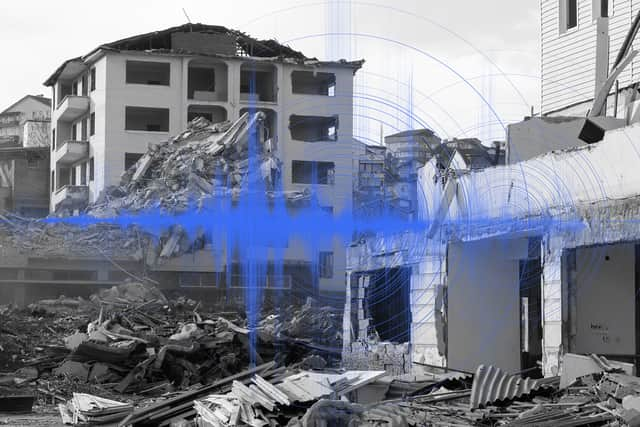What are tectonic plates? Where are they on world map, how many are there, why do they cause earthquakes
and live on Freeview channel 276
A 7.8-magnitude earthquake shook Turkey and Syria in the early hours of Monday morning (6 February) resulting in the deaths of more than 9,000 people.
Tremors were felt as far away as Egypt, Lebanon and the island of Cyprus, while a tsunami warning was briefly issued by authorities in Italy along the country’s coast.
Advertisement
Hide AdAdvertisement
Hide AdThe earthquake was caused by the Earth’s tectonic plates rubbing up against an adjoining one until one plate suddenly jerked across from the building pressure, causing the surface to move. In this case it was the Arabian plate moving northwards and grinding against the Anatolian plate.
Friction from the plates has been responsible for very damaging earthquakes in the past. On 13 August 1822 it caused an earthquake registering 7.4 in magnitude, but this is significantly less than the 7.8 magnitude recorded on Monday.
Here we explain what tectonic plates are, why they move and cause earthquakes - and where fault lines are.


What are tectonic plates?
The Earth’s crust is made up of separate parts, called plates, that nestle alongside each other. They are massive, irregular shaped slabs of solid rock - generally composed of both continental and oceanic lithosphere (the solid outer part of the Earth).
Advertisement
Hide AdAdvertisement
Hide AdPlate sizes can vary from a few hundred to thousands of kilometres wide, with the Pacific and Antarctic Plates being among the largest. Plate thickness can also vary too.
Most of the boundaries between individual plates cannot be seen because they are hidden between the oceans, but they can be mapped accurately from outer space measurements from GEOSAT satellites. Earthquakes and volcanic activity are concentrated near these boundaries.
Why do they move and cause earthquakes?
The Earth’s tectonic plates are constantly moving but this movement is slow. One explanation for why they move is believed to be due to convection currents which occur in the semi-molten mantle. These convection currents are created by heat from within the earth – much of which is generated by radioactive decay in the core.
Internet Geography explains: “As the semi-molten rock in the mantle is heated it becomes less dense than its surroundings and rises. As it reaches the crust above, it spreads out carrying the plates above with it. As the semi-molten rock then cools, it gradually sinks back down to be re-heated.”
Advertisement
Hide AdAdvertisement
Hide AdThese plates often try to move but are prevented by the friction of rubbing up against an adjoining one. But sometimes the pressure builds until one plate suddenly jerks across, causing the surface to move.
When the stress on the edge overcomes the friction, there is an earthquake that releases energy in waves that travel through the earth’s crust and cause the shaking that we feel.
Another explanation for plate movement is a ridge push. This is where newly-formed plates which are warm have a higher elevation than the colder, more dense plate material further away, with gravity causing the higher plate at the ridge to push away. This causes the plates to move away from each other.
A slab pull is a third explanation, where an oceanic plate sinks into the mantle under the influence of gravity pulling the rest of the plate along with it.
Where are the Earth’s fault lines?
Advertisement
Hide AdAdvertisement
Hide AdThe movement of the rocks creates fractures or discontinuity which is better known as a fault.
The tectonic forces at work within the rocks create large faults resulting in the release of energy and therefore the eruption of volcanoes and earthquakes.
The surface trace of a fault is called a fault line. It happens when a continental/oceanic plate or two continental/oceanic plates or a continental and an oceanic plate move apart.


These are the major continental plates which are causing the Earth’s fault lines by their movement:
- North American Plate
- South American Plate
- African Plate
- Arabian Plate
- Eurasian Plate
- Bismarc Plate
- Indo-Australian Plate
- Antarctic Plate
These are the Earth’s major oceanic plates:
- Juan De Fuca Plate
- Pacific Plate
- Nazca Plate
- Scotia Plate
- Cocos Plate
- Caribbean Plate
- Philippine Plate
- Fiji Plate
- Carolina Plate
The African Plate is believed to be splitting along the East African Rift Zone, causing cracks in the surface and resulting in volcanic eruptions.
Comment Guidelines
National World encourages reader discussion on our stories. User feedback, insights and back-and-forth exchanges add a rich layer of context to reporting. Please review our Community Guidelines before commenting.
